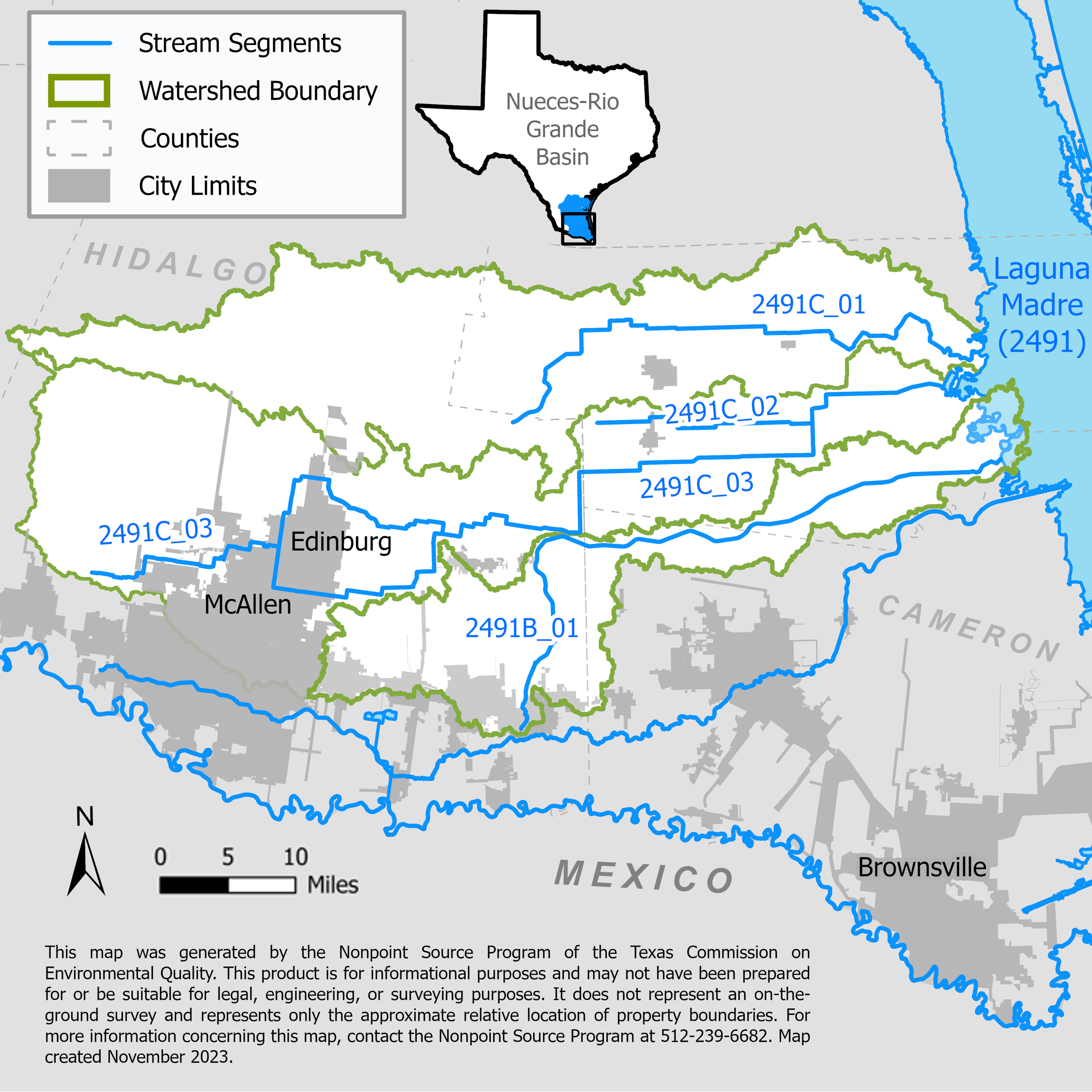Lower Laguna Madre (North & Central): Developing a Watershed Protection Plan
A multi-phased project which will identify existing data and data gaps to characterize and develop a watershed protection plan for the northern and central portions of the Lower Laguna Madre coastal watershed.

On this page:
Project Area
River Basin: Bays and Estuaries
Water Body: Raymondville Drain (2491C_01), Hidalgo Main (2491C_03), and North Floodway (2491B)
Location: Hidalgo, Cameron, and Willacy counties
Background
The Raymondville Drain and the Hidalgo main Floodwater Channel flow into the northern section of Laguna Madre (2491_01). The North Floodway flows into the central section of Laguna Madre (2491_02). Both the northern section of Laguna Madre and the central section of Laguna Madre do not meet state water quality standards for aquatic-life use due to low dissolved oxygen levels and have concerns for excess nutrients. The central section of Laguna Madre also does not meet the standards for primary contact recreation due to high bacteria levels. Although the Raymondville Drain, Hidalgo Floodway, and North Floodway meet water quality standards, their urban flows are main contributors of freshwater, wastewater, and stormwater to the Laguna Madre, a sensitive estuary.
Project Descriptions
The watershed characterization has involved four project phases:
February 2014 – August 2018
Texas Water Resources Institute identified existing data and data gaps and collected data to fill the gaps. This helped characterize land use, water quality, and hydrologic circumstances in the north and central section of the Lower Laguna Madre watershed and determine a suitable analytical method for estimating pollutant loads. Stakeholder input helped to determine goals, objectives, and indicators for addressing the water quality impairments and concerns. The information and partnerships from this project provided the foundation for future development of a watershed protection plan.
September 2018 – August 2022
The University of Texas at Rio Grande Valley initiated a characterization of the north and central portions of the watershed – collecting, analyzing, categorizing, and evaluating the data to assess current conditions. This included identifying water quality issues, potential sources of pollution, and the relative contribution of each source.
The university developed a conceptual model to show the linkage between water quality problems and pollution sources – and to the extent possible – included a spatial and temporal exploration of them.
Gathering and analyzing existing water quality data helped identify data gaps and what data to collect in the future. Both existing and new data will determine which analytical method will be used for estimating the amounts of pollutants entering the water bodies, and the reductions needed to improve water quality. Stakeholders were involved throughout the process to provide local input.
September 2022– February 2026
Research, Applied Technology, Education, Services, Inc. – a non-profit corporation – will continue work on the watershed characterization report and a water quality and flow monitoring program started with the Texas Water Development Board to characterize water quality and flow-dynamics in the northern and central Lower Rio Grande Valley waterways. The monitoring program will collect data from three sites and write updated watershed characterization reports.
September 2024– August 2027
This is the first phase of developing a watershed protection plan for the area. Research, Applied Technology, Education, Services, Inc. will continue the monitoring program and collect data at six sites.
For More Information
See the Rio Grande Valley Stormwater Management watershed characterization webpage and watershed protection plan development webpage .
To find out more about the NPS Program, call 512-239-6682 or email us at nps@tceq.texas.gov.

 Back to top
Back to top